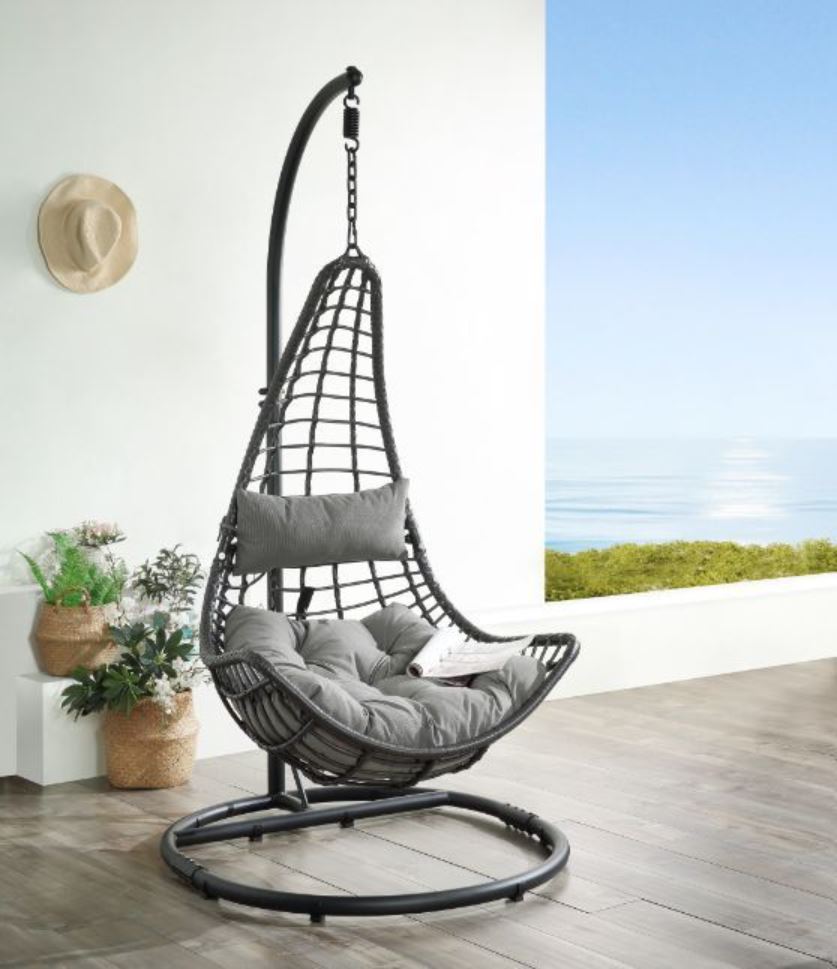The Origins of Hanging Egg Chairs
Hanging egg chairs have a rich history that dates back several decades. The iconic design, often associated with the mid-century modern movement, emerged in the 1950s and 1960s. Danish designer Nanna Ditzel is credited with creating the first hanging egg chair in 1959, which she named the “Egg.” Ditzel’s innovative design combined a suspended cocoon-like seat with a steel frame, revolutionizing the concept of relaxation furniture.
The popularity of hanging egg chairs quickly spread throughout Europe and North America. Its unique shape and comfortable seating experience made it an instant hit among design enthusiasts. The rise of the swinging ’60s culture further propelled the trend, as people sought out stylish and unconventional furniture pieces for their homes.
Symbol of Freedom and Rebellion
Beyond its aesthetic appeal, hanging egg chairs became a symbol of freedom and rebellion during the counterculture movements of the 1960s. The swinging motion and the feeling of being cocooned within the chair resonated with the desire for liberation from societal norms. It represented a break from traditional static furniture and embraced a more dynamic and experimental lifestyle.
The hanging egg chair also became associated with alternative living spaces and unconventional interior design. It found a place in bohemian homes, psychedelic-themed lounges, and outdoor communal areas, reflecting the spirit of the era. The chair’s ability to create a private sanctuary within a public space allowed individuals to express their individuality and escape the constraints of a rigid society.
Evolution and Modern Adaptations
Over the years, hanging egg chairs have undergone various adaptations and modifications to suit changing tastes and design trends. While the original design by Nanna Ditzel remains iconic, contemporary designers and furniture manufacturers have put their own spin on the concept, incorporating new materials, shapes, and colors.
In recent years, there has been a resurgence of interest in hanging egg chairs, driven by a nostalgia for mid-century modern design. Additionally, advancements in materials technology have allowed for the creation of more durable and weather-resistant options, making hanging egg chairs suitable for both indoor and outdoor use. These modern adaptations ensure that the charm and allure of the original design are preserved while catering to the demands of contemporary living.
Cultural Impact and Global Appeal
Hanging egg chairs have transcended their origins and become a global design icon. They have become synonymous with leisure, relaxation, and modernity. Their timeless appeal has made them a favorite among architects, interior designers, and homeowners looking to add a touch of elegance and sophistication to their spaces.
Today, hanging egg chairs can be found in various settings, from private residences to upscale hotels and resorts. They have become an integral part of outdoor spaces such as gardens, patios, and balconies, offering a stylish and comfortable seating option for enjoying nature or socializing.
Furthermore, the influence of hanging egg chairs extends beyond residential spaces. They have become a staple in commercial environments, including trendy cafes, lounges, and even corporate offices, where they create inviting and unconventional seating areas that foster creativity and relaxation.
In conclusion, the history of hanging egg chairs is a testament to their enduring appeal and the impact they have had on design and culture. From their humble beginnings as a mid-century modern innovation, they have evolved into symbols of freedom, rebellion, and contemporary style. Whether in their original form or in modern adaptations, hanging egg chairs continue to captivate individuals worldwide, providing a unique and captivating seating experience.
